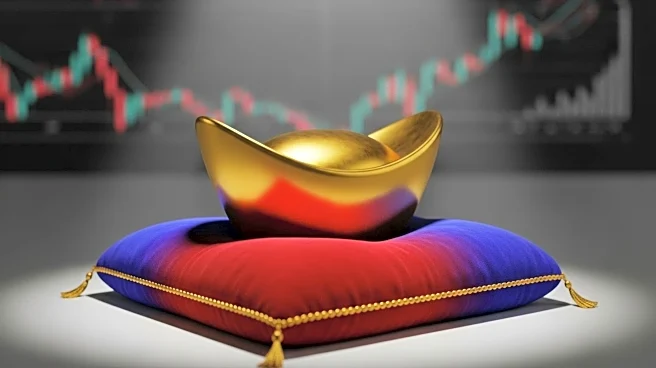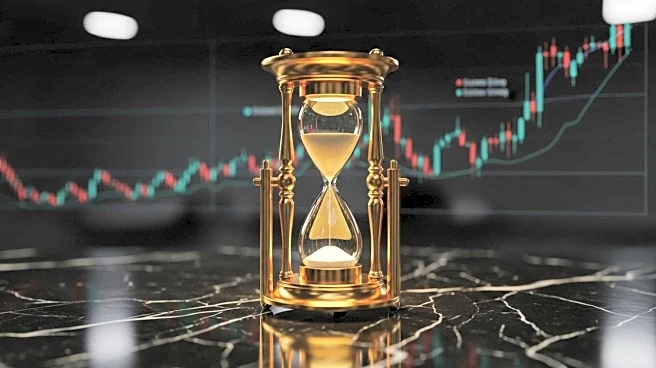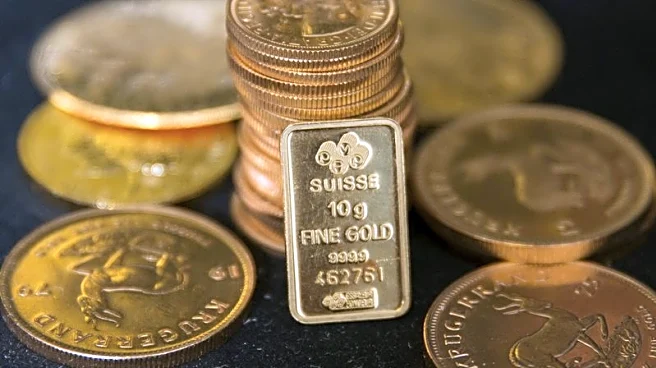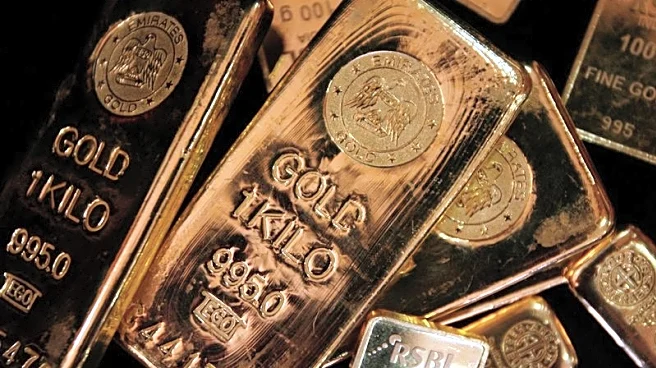What's Happening?
Goldman Sachs has raised its gold price forecast for December 2026 by $600, predicting a rise to $4,900 per ounce. This adjustment comes as gold prices have surged past $4,000 an ounce for the first time, driven by strong Western exchange-traded fund (ETF) inflows and likely central bank buying. The increase in gold prices is attributed to global economic and geopolitical uncertainties, as well as potential U.S. interest rate cuts, which have bolstered the rally.
Why It's Important?
The surge in gold prices reflects investors' preference for safe-haven assets amid economic instability and geopolitical tensions. This trend could have significant implications for financial markets, influencing investment strategies and asset allocations. The increased demand for gold may benefit mining companies and ETF providers, while central banks might adjust their reserves in response to price movements. Additionally, the potential interest rate cuts could further impact currency values and global trade dynamics.
What's Next?
As gold prices continue to rise, investors may seek to increase their holdings in gold, potentially leading to further price increases. Central banks might consider adjusting their monetary policies to address the economic uncertainties driving the demand for gold. Financial institutions and analysts will likely monitor market trends closely to provide updated forecasts and investment advice. The ongoing geopolitical tensions and economic challenges may continue to influence gold prices in the foreseeable future.
Beyond the Headlines
The rising gold prices could lead to broader economic implications, such as affecting inflation rates and impacting consumer prices for goods and services. The increased demand for gold may prompt discussions on the sustainability and ethical considerations of gold mining practices. Additionally, the geopolitical tensions driving the demand for safe-haven assets may lead to diplomatic efforts to address underlying issues.











